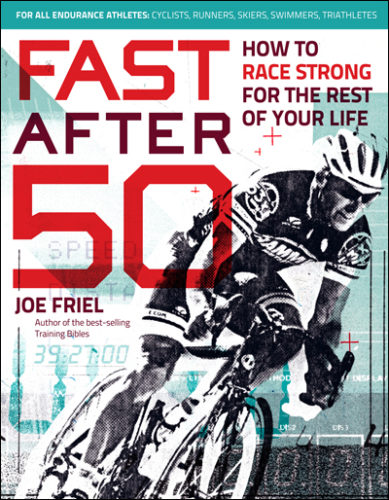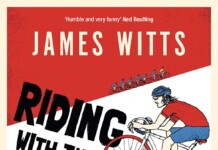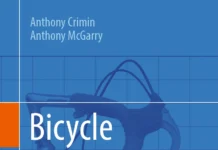By Lou Melini — About every 5-10 years I try to read a book on the topic of sports science to update my current knowledge short of reading an academic textbook. Velopress Books has given me what I needed. Joe Friel has written a number of “training bibles” for cyclists and triathletes for VeloPress, but Fast after 50 is the first book of his that I have read. The book seems to be primarily targeted to the older athlete that has a history of competition and formal training for a relatively long time period. However, many of the principles for training stated in “Fast after 50” can be well applied to athletic non-racers or those that do not consider themselves athletes.

“Going Fast after 50” is a relative term. At 66, I may be capable of holding onto the wheel of other 66 year-olds, but I am very much slower than I was just 6 years ago when I was a podium finisher in the local cyclocross series over-55 age group. I have little desire to “race strong for the rest of my life” as my motivation has been a challenge. I have not raced in the cyclocross series for the past 2 seasons though this is partly because I was either training for or recovering from a 6-month hike of the Appalachian Trail.
In the prologue of the book Mr. Friel states; “The first thing athletes typically notice is that they don’t recover form a race or a hard training session as quickly as they did a few years earlier. Race times are slowing, there’s a loss of power, hills seem steeper, and other performance markers are also looking worse.” That paragraph sounded like it was written with me in mind. In addition I have had frequent stiffness, fatigue and a bout of arthritis in my right knee that caused me to limp every morning for nearly 3 months in 2014. I am not alone as evidenced in conversations with other “older” athletes.
With 21 pages of references to back up his book Mr. Friel answers the big question, “What can be done” for the aging body. Chapter one discusses “The Aging Myth” and the “plenty of voices telling you that you shouldn’t be exercising so strenuously”. Training Basics, Advanced Training, Rest and Recovery, Body Fat and Nutrition are all covered in subsequent chapters in quite a bit of detail. The book is a seminar in aging, training, and a motivational primer to get you moving. There are contributions from a variety of experts such as former elite athletes as John Howard and Ned Overend as well as physicians such as Larry Creswell and John Post, to name a few, that add their expertise to the book. The book is not just for males as Mr. Friel addresses woman athletes plus a piece by Gale Bernhardt on menopause.
Overall the book is an easy and interesting book to read. Chapter two reviews theories of aging followed by chapter three that discusses the decreased physiological capability. An aging athlete can’t control the factors of aging but chapter four points out that “lifestyle a big impact and largely determines your physiological age.” “The approach to training is something we can control to counter the aging processes”.
Mr. Friel points out that “regardless of your ability or experience, there are only three workout variables that can are the basis of training, intensity, duration and frequency”. Understanding the simplicity of that statement is important for any cyclist, swimmer or runner that wants to improve their health and physical capability.
Some of the chapters are more complicated. The chapters on Training Basics and Advanced Training require careful attention. Terminology describing workouts such as Aerobic-capacity, Lactate-Threshold, and Aerobic Threshold can be a tad confusing, along with the variables that make up duration, frequency, intensity, recovery, and training periods. If you have used a coach, have had base-line fitness and power testing, and are familiar with a structured training routine, these chapters will be easier to read. For those without that background the book concludes with Appendix A-C that summarizes these chapters that helps with the understanding of the training terms used. Mr. Friel also discusses the benefits of strength training. I personally did not think weight training helped my racing, but lowering the weights and increasing the reps has helped my arthritis.
Mr. Friel spent a good deal of time on the science of sport and training and for the most part, he did so in a way that most readers will understand the research summaries. Regarding cross training for swimming he states: “intervals done by running or cycling have been shown to be of no benefit to swimming.” He discussed many of the aides to help measure power and body composition such as power meters, heart rate monitors, and body fat calipers to name a few. However he is not opposed to stating the obvious; “The fit of your pants and belts around the waist are also indicators of the direction your fatness is going”.
I came away after reading the book with a better understanding of what is taking happening, to me especially statements when one reaches 65. I also become a bit more energized about changing my attitude for more intensity. According to Mr. Friel’s research the anabolic hormones erythropoietin, testosterone, human growth hormone, and insulin-like growth factor will decrease as you age. You can counter that with: “High intensity training stimulates anabolic hormone secretion more than low-intensity, steady-state training. Heavy load strength training has a similar effect”. I was motivated to start integrating a few “sprints” in my recreational rides and slightly increased the machine weights at the gym the week I finished reading the book. There were some “folksy” take home messages that I liked such as “you must always respect fatigue” and his analysis of ‘risks” vs. “rewards” of training intensity have important implications.
The VeloPress price I paid was $21.95. A good investment for any older competitive athlete, non-competitive athlete or the recreationalist that hopes to continue to be able to ride a charity ride such as the Bike MS 2-day 150 mile event. In addition, none of us are getting younger. If you ask if the book would be worth reading if you were less than 50, I will give you the answer by quoting that ageless baseball pitcher and reputed philosopher, Satchel Paige. His advice on how to keep young included, “Don’t look back. Something might be gaining on you”.
Fast after 50: How to Race Strong for the Rest of Your Life, By Joe Friel, 2015: VeloPress Books, www.Velopress.com











